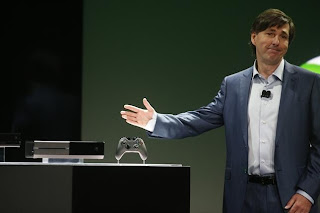We
are onto Part 2 of our daily (ish) feature about the game announcements that
everyone should be excited about. This year is certainly looking like a strong
one for us Video Gamers.
Comments are welcome below…. Feel free to drop in some of your own suggestions for future previews too!
Zelda:
A Link Between World
Publisher:
Nintendo
Developer:
Nintendo
Release
Date: Holiday 2013
Platforms:
3DS
It’s
a rare sight to see a modern sequel to one of the greatest games of all time –
but that’s exactly what Nintendo has done with its 3DS follow-up to the SNES
classic The Legend of Zelda: A Link to the Part. It’s a game that has been
garnering worldwide cheers since 1992 and one that deserves only the sweetest
of touches to ensure its sequel matches the masterpiece of its father figure.
The
game was originally revealed in April’s Nintendo Direct conference and has
since been showcased with videos and short demo’s (including Dungeon one). The
sequel is certainly being given a lot of love to keep the magic from our most
beloved adventure with Link alive. The 2D sprites have been reworked into full
3D models, which keep with the distinctive ALttP design style, and bring with
it a game-world of bright colours.
The
main feature shown off so far is Link’s ability to turn into a painting of
sorts and slide along the surface of a wall. This allows him to explore
dungeons in a whole new way and will hopefully bring with it some unique
puzzles.
I’m
still drawing on the hope that we get another version of the Dark World;
especially as the over-world mirrors that of the original. It also wouldn’t be
out of the question for Nintendo to spin in some sort of multiplayer. They seem
especially keen on this concept and pushed the online capabilities as a big
selling point for the 3DS system.
Battlefield
4
Publisher:
EA
Developer:
DICE
Release
Date: October 29, 2013 (Next-Gen TBD)
Platforms:
PC, PS3, PS4, Xbox 360, Xbox One
As
the first game to use the Frostbite 3 Engine, we’re most curious to just see
what Battlefield 4 is going to look like from start to finish. The impressive
tech video’s shown at E3 prompted huge pre-order sales and gives us the
impression, and rightly so, that the multiplayer portion is going to be even
larger than ever before. Have you ever seen a whole building disappear ‘in game’?
DICE
have shown us the most impressive shooter on the next-gen so far and with the
rumours of the Commander feature returning (the best thing about Battlefield
2’s strategic, team-centric competition) then I’m even more excited.
It’s
become a trend for this franchise to boost their multiplayer portions without
really coming into their own on the single player campaign which is sure to
still be the case. Single player isn’t the go to portion of FPS’s anymore so
DICE are looking on track to close the sale gap on COD even further this year.
Even so let’s just hope the campaign is better than last time.
With
any luck, the next-generation hardware and future of Frostbite will enable even
more destruction, too.
Dragon
Age 3: Inquisition
Publisher:
EA
Developer:
BioWare
Platforms:
PC, Xbox 360, PS3, Probably Next-Gen
Release
Date: TBA
BioWare
are fully aware of the slump they had after Dragon Age II was rushed into our
stores a few years ago and they are pulling out all the stops to win us back.
Dragon Age III: Inquisition has been touted to have a massive world with
sections bigger than the entirety of Dragon Age II (although that can’t be hard
with the dungeon repetition).
Again
we can expect a number of party characters to choose from and more
customisation than ever, you can even have your own castle to call ‘home’. All
of the game will be built on DICE’s Frostbite 2 engine too which will,
obviously, make the game wonderful to look at.
If
the rumours are true then this may be the first RPG out the door that could
compare with The Witcher 3. BioWare are known for their great storytelling and
it looks like the developers are letting their creative designers a free reign.
Comments are welcome below…. Feel free to drop in some of your own suggestions for future previews too!























